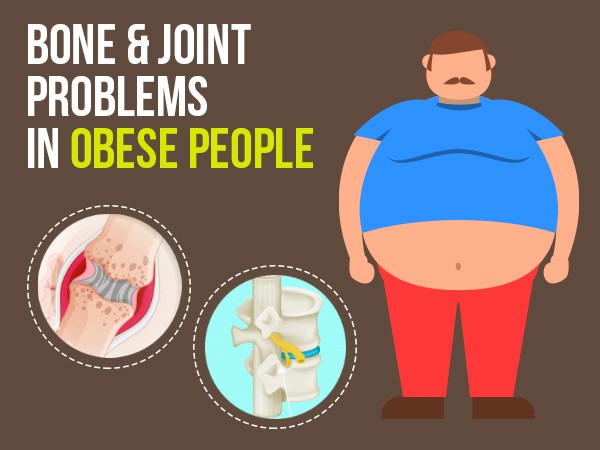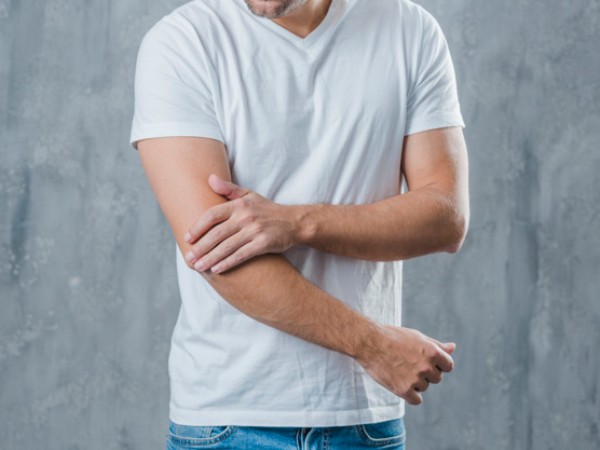Just In
- 2 hrs ago

- 6 hrs ago

- 6 hrs ago

- 12 hrs ago

Don't Miss
- Finance
 Stock Market Live Updates: Nifty Forecast To Lose Each Week; Infosys's ADR Dips 2.6% Over Night
Stock Market Live Updates: Nifty Forecast To Lose Each Week; Infosys's ADR Dips 2.6% Over Night - Movies
 Bade Miyan Chote Miyan Box Office Day 9 Prediction: Akshay’s Film To Cross 51Cr Ahead Of 2nd Weekend
Bade Miyan Chote Miyan Box Office Day 9 Prediction: Akshay’s Film To Cross 51Cr Ahead Of 2nd Weekend - Sports
 LSG vs CSK IPL 2024: Four Batters Who Can Score Most Runs in Match 34
LSG vs CSK IPL 2024: Four Batters Who Can Score Most Runs in Match 34 - News
 12 Jurors Picked For Donald Trump’s Hush Money Trial, Alternate Selection Continues
12 Jurors Picked For Donald Trump’s Hush Money Trial, Alternate Selection Continues - Automobiles
 Aprilia RS 457 Accessories: A Detailed Look At The Prices
Aprilia RS 457 Accessories: A Detailed Look At The Prices - Education
 Karnataka SSLC Result 2024 Soon, Know How to Check Through Website, SMS and Digilocker
Karnataka SSLC Result 2024 Soon, Know How to Check Through Website, SMS and Digilocker - Technology
 Nothing Ear, Ear a With ANC, Up to 42.5 Hours of Battery Launched; Check Price and Availability
Nothing Ear, Ear a With ANC, Up to 42.5 Hours of Battery Launched; Check Price and Availability - Travel
Telangana's Waterfall: A Serene Escape Into Nature's Marvels
National Bone And Joint Day 2020: Bone And Joint Problems In Obese People
National Bone and Joint Day is observed on 4 August every year. Initiated in 2012 by the Indian Orthopedic Association, Bone and Joint day aims to sensitise society about the increasing impact of musculoskeletal conditions and promote cost-effective prevention and treatment.

The slogan for the day is "Stronger bones Stronger India - because we believe healthier the bones, healthier the society and stronger the nation." On this National Bone And Joint Day, let us take a look at some of the common bone and joint problems reported in obese individuals.
Pregnancy Brain Is Not A Myth! Read On To Know About Momnesia
Being overweight or obese is now recognised as a serious cause of ill health and disability. There is a significant positive association between orthopaedic disorders and the level of obesity causing pain, deformity and difficulty in walking. Excess body weight accumulation increases pressure on joints, particularly the hips, knees and ankles [1].
Here Are A Few Types Of Arthritis:

Osteoarthritis: It is a condition of damage/ wear and tear of the joint lining or cartilage. Obesity triggers this by loading excessive weight on the weight-bearing joints like the knee and the hip [2].
Knee osteoarthritis: This is the most common arthritis, especially in the Indian subcontinent. While walking, an individual exerts 3 to 6 times pressure that of the bodyweight on the weight-bearing knee joint, which means in an obese with excess body weight, larger forces are exerted, which lead to a higher risk of deterioration of cartilage [3]. Also, there are excessive fat tissues that produce hormones and other factors that affect the joint cartilage metabolism and cause inflammation of the joints giving rise to joint pathology. Leptin is one of the hormones causing knee osteoarthritis [4].
Hip osteoarthritis: The force exerted across the hip is three times that of body weight. Hip osteoarthritis is caused by factors such as joint injury, increasing age and being overweight [5].
Hand osteoarthritis: The observation that obese individual has a higher risk in having hand osteoarthritis has led to a hypothesis that the metabolic effect produced by fat tissue is the underlying factor [6].
Osteoporosis: It is a progressive bone condition of decrease in bone mass and density (Bone Mineral Density or BMD) which can lead to an increased risk of fracture. Recent research suggests that obesity may accelerate bone loss. It is the amount of muscle mass which is seen in an active person, which accounts for bone strengthening effects and not due to the fat seen in a heavy person [7].
Lower back pain: Low back pain from degenerative disc disease of the lumbar spine is one of the most disabling conditions in the community and overweight, and obesity has the strongest association with seeking care for low back pain [8].

Managing Hip and Knee Osteoarthritis

Lifestyle changes: If one is overweight, try to lose weight by doing more physical activity and eating a healthier diet. Regular exercise keeps you active and mobile and builds up muscle, thereby strengthening the joints and can improve symptoms [9].
Pain killers: Painkillers help with pain and stiffness for the short term. They don't affect arthritis itself and won't repair the damage to your joint. Creams and gels can be applied directly to painful joints [10].
Nutritional supplements: Glucosamine and chondroitin are nutritional supplements. Animal studies have found that glucosamine can both delay the breakdown of and repair damaged cartilage. However, there is insufficient evidence to support the use of glucosamine in humans, and one can expect only a mild-to-moderate reduction in pain [11].
Joint injections: If pain from osteoarthritis is severe joint steroid injections are injected into the joints that can reduce swelling and pain. The injections can start working within a day or so and may improve pain for several weeks or months [12]. Hyaluronic acid injections, which help to lubricate your knee joint, also give short term relief in the early stages. Stem cell treatment or cartilage regeneration procedures are being tried in young people with small defects. However, it is still experimental and lacks long term evidence [13].
Surgery: May be recommended if you have severe pain or mobility problems.
Arthroscopy: If one has frequent painful locking/stiffening episodes especially in the knee joint, an operation to wash out loose fragments of bone and other tissue as the joint can be performed by a minimally invasive keyhole procedure called Arthroscopy [14].
Arthrodesis: If hip or knee replacement is not suitable, especially in young people who do heavy manual work, one can consider an operation known as an arthrodesis, which fuses your joint in a permanent position. This means that your joint will be stronger and much less painful, although you will no longer be able to move it [15].

Osteotomy: In young, active people in whom a knee joint replacement would fail due to excessive use, one can consider an operation called an osteotomy. This involves adding or removing a small section of bone either above or below your knee joint. This helps realign your knee, so your weight is no longer focused on the damaged part of your knee [16]. An osteotomy can relieve your symptoms of osteoarthritis. However, you may still need knee replacement surgery eventually as you grow old.
Joint replacement surgery: Joint replacement therapy is most commonly carried out to replace hip and knee joints. It involves replacing a damaged, worn or diseased joint with an artificial joint made of special plastics and metal. For most people, a replacement hip or knee will last for at least 20 years, exceptionally if it is cared for properly and not put under too much strain [17][18].
On A Final Note
Children with obesity have significantly increased odds of sustaining joint and bone injuries than children with a healthy BMI. Although complications can increase as the BMI increases, surgery and therapy can offer patients with obesity bone and joint pain relief and improved functioning.
With
inputs
from
Dr.
G
K
Sudhakar
Reddy,
Sr
Consultant
Orthopaedic
Surgeon,
Citizens
Speciality
Hospitals,
Hyderabad.
-
 fashionLooking For The Perfect Plus Size Dress? Big Discounts On Maxi & Midi Dresses On Amazon
fashionLooking For The Perfect Plus Size Dress? Big Discounts On Maxi & Midi Dresses On Amazon -
 wellnessObese People Are At An Increased Risk Of Contracting COVID-19, What Do Experts Have To Say
wellnessObese People Are At An Increased Risk Of Contracting COVID-19, What Do Experts Have To Say -
 disorders cureHow Effective Is Bloodletting Therapy?
disorders cureHow Effective Is Bloodletting Therapy? -
 wellnessWhat Are The Best Exercises For Obese People?
wellnessWhat Are The Best Exercises For Obese People? -
 basicsHow Does Being Overweight Affect The Baby And The Mother-to-be
basicsHow Does Being Overweight Affect The Baby And The Mother-to-be -
 diet fitness10 Surprising Reasons Why You Are Not Losing Weight Fast
diet fitness10 Surprising Reasons Why You Are Not Losing Weight Fast -
 wellnessThis Is One Major Risk For Prostate Cancer In Men
wellnessThis Is One Major Risk For Prostate Cancer In Men -
 wellnessIndia Had Second Highest Obese Children In 2015: Study
wellnessIndia Had Second Highest Obese Children In 2015: Study -
 wellnessObese? Weight Loss May Prevent Knee Joint Degeneration
wellnessObese? Weight Loss May Prevent Knee Joint Degeneration -
 diabetesObese Kids At Four-Fold Greater Risk Of Type-2 Diabetes Later
diabetesObese Kids At Four-Fold Greater Risk Of Type-2 Diabetes Later -
 diet fitnessTop Methods To Curb your Cravings And Completely Avoid Junk Foods
diet fitnessTop Methods To Curb your Cravings And Completely Avoid Junk Foods -
 wellnessDiscrimination Against Obese People May Increase Health Risks
wellnessDiscrimination Against Obese People May Increase Health Risks


 Click it and Unblock the Notifications
Click it and Unblock the Notifications



